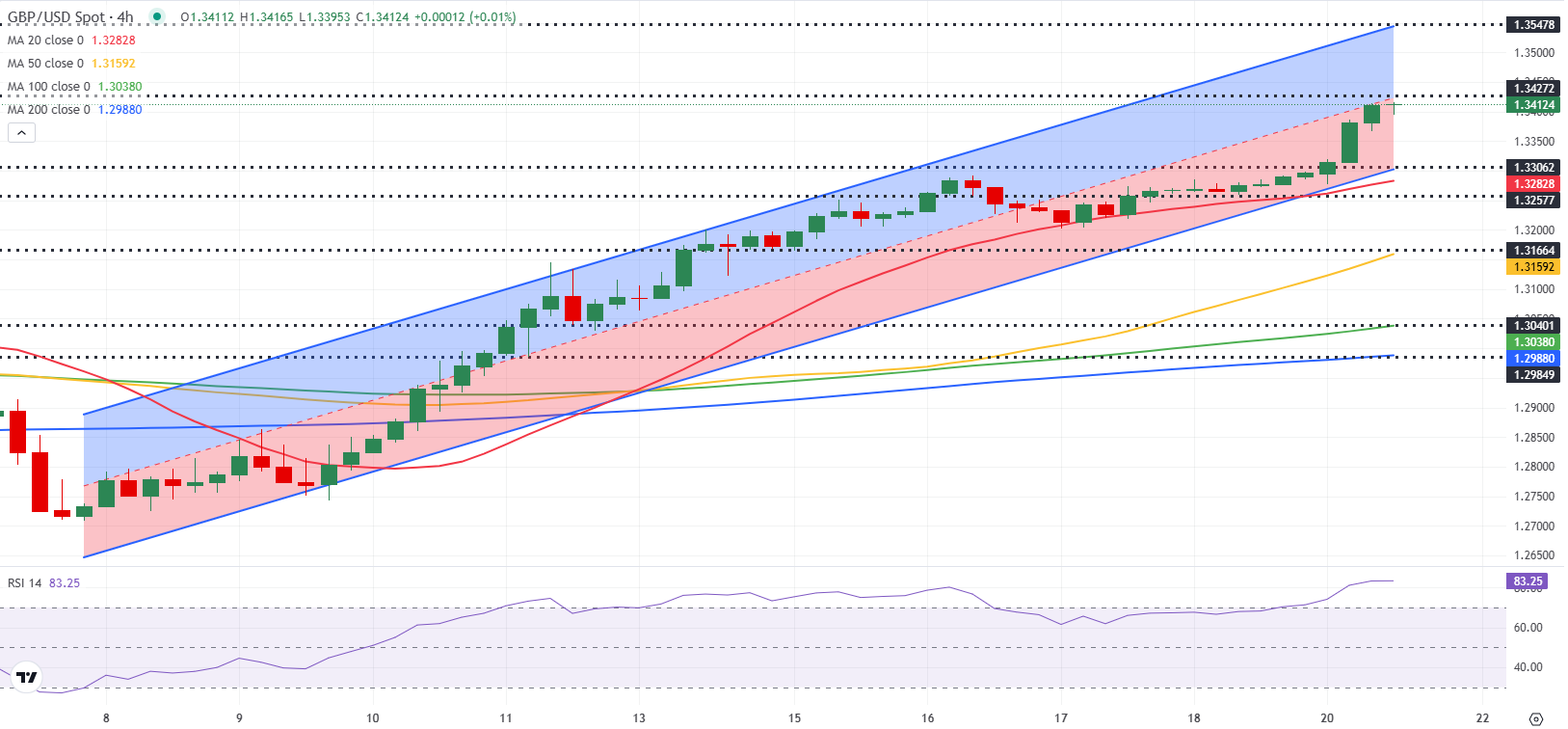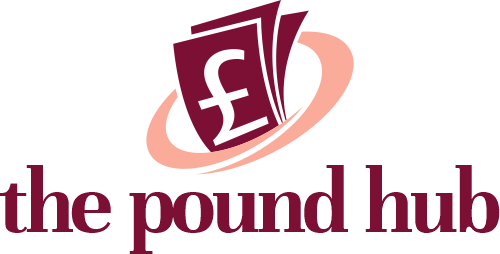- GBP/USD trades at a fresh 2025-high near 1.3400 in the European session on Monday.
- UK markets will remain closed in observance of Easter Monday holiday.
- The US economic calendar will not offer any high-impact data releases.
GBP/USD extends its uptrend to start the week and trades at its highest level since September near 1.3400. The pair could face stiff resistance at 1.3430.
British Pound PRICE Today
The table below shows the percentage change of British Pound (GBP) against listed major currencies today. British Pound was the strongest against the US Dollar.
| USD | EUR | GBP | JPY | CAD | AUD | NZD | CHF | |
|---|---|---|---|---|---|---|---|---|
| USD | -1.45% | -0.87% | -1.10% | -0.40% | -0.74% | -1.44% | -1.44% | |
| EUR | 1.45% | 0.43% | 0.33% | 1.02% | 0.54% | -0.02% | -0.01% | |
| GBP | 0.87% | -0.43% | 0.06% | 0.60% | 0.10% | -0.46% | -0.45% | |
| JPY | 1.10% | -0.33% | -0.06% | 0.71% | 0.23% | -0.23% | -0.31% | |
| CAD | 0.40% | -1.02% | -0.60% | -0.71% | -0.47% | -1.05% | -1.03% | |
| AUD | 0.74% | -0.54% | -0.10% | -0.23% | 0.47% | -0.54% | -0.55% | |
| NZD | 1.44% | 0.02% | 0.46% | 0.23% | 1.05% | 0.54% | 0.03% | |
| CHF | 1.44% | 0.00% | 0.45% | 0.31% | 1.03% | 0.55% | -0.03% |
The heat map shows percentage changes of major currencies against each other. The base currency is picked from the left column, while the quote currency is picked from the top row. For example, if you pick the British Pound from the left column and move along the horizontal line to the US Dollar, the percentage change displayed in the box will represent GBP (base)/USD (quote).
Following the long weekend, the US Dollar (USD) comes under a strong selling pressure on Monday as the US-China trade conflict shows no signs of de-escalation anytime soon.
A spokesperson for the Chinese Commerce Ministry said early Monday that China will take countermeasures against countries that make a deal with the US at the expense of their interests. Additionally, the Financial Times reported that Chinese state-backed funds were cutting off new investment in US private equity as the next step in the ongoing trade war.
Meanwhile, the USD also feels the pressure from growing concerns about the Federal Reserve (Fed) losing its independency. While speaking to reporters late Friday, White House economic adviser Kevin Hassett said President Donald Trump and his team were continuing to study if firing Fed Chairman Jerome Powell was an option in a way that it wasn’t before.
Financial markets in the UK will remain closed in observance of the Easter Monday holiday. Stock and bond markets in the US will return to action. At the time of press, US stock index futures were losing about 1%, pointing to a bearish opening in Wall Street. The US economic calendar will not feature any data releases. Hence, investors could remain reluctant to position themselves for a correction in the USD in the current market environment.
GBP/USD Technical Analysis

The Relative Strength Index (RSI) indicator on the 4-hour chart rose above 80, pointing to overbought conditions in the near term. On the upside, 1.3430 (static level, mid-point of the ascending channel) aligns as a key resistance level before 1.3500 (static level, round level) and 1.3550 (upper limit of the ascending channel).
Looking south, supports could be spotted at 1.3350 (static level), 1.3300 (lower limit of the ascending channel) and 1.3260 (static level).
Pound Sterling FAQs
The Pound Sterling (GBP) is the oldest currency in the world (886 AD) and the official currency of the United Kingdom. It is the fourth most traded unit for foreign exchange (FX) in the world, accounting for 12% of all transactions, averaging $630 billion a day, according to 2022 data.
Its key trading pairs are GBP/USD, also known as ‘Cable’, which accounts for 11% of FX, GBP/JPY, or the ‘Dragon’ as it is known by traders (3%), and EUR/GBP (2%). The Pound Sterling is issued by the Bank of England (BoE).
The single most important factor influencing the value of the Pound Sterling is monetary policy decided by the Bank of England. The BoE bases its decisions on whether it has achieved its primary goal of “price stability” – a steady inflation rate of around 2%. Its primary tool for achieving this is the adjustment of interest rates.
When inflation is too high, the BoE will try to rein it in by raising interest rates, making it more expensive for people and businesses to access credit. This is generally positive for GBP, as higher interest rates make the UK a more attractive place for global investors to park their money.
When inflation falls too low it is a sign economic growth is slowing. In this scenario, the BoE will consider lowering interest rates to cheapen credit so businesses will borrow more to invest in growth-generating projects.
Data releases gauge the health of the economy and can impact the value of the Pound Sterling. Indicators such as GDP, Manufacturing and Services PMIs, and employment can all influence the direction of the GBP.
A strong economy is good for Sterling. Not only does it attract more foreign investment but it may encourage the BoE to put up interest rates, which will directly strengthen GBP. Otherwise, if economic data is weak, the Pound Sterling is likely to fall.
Another significant data release for the Pound Sterling is the Trade Balance. This indicator measures the difference between what a country earns from its exports and what it spends on imports over a given period.
If a country produces highly sought-after exports, its currency will benefit purely from the extra demand created from foreign buyers seeking to purchase these goods. Therefore, a positive net Trade Balance strengthens a currency and vice versa for a negative balance.







